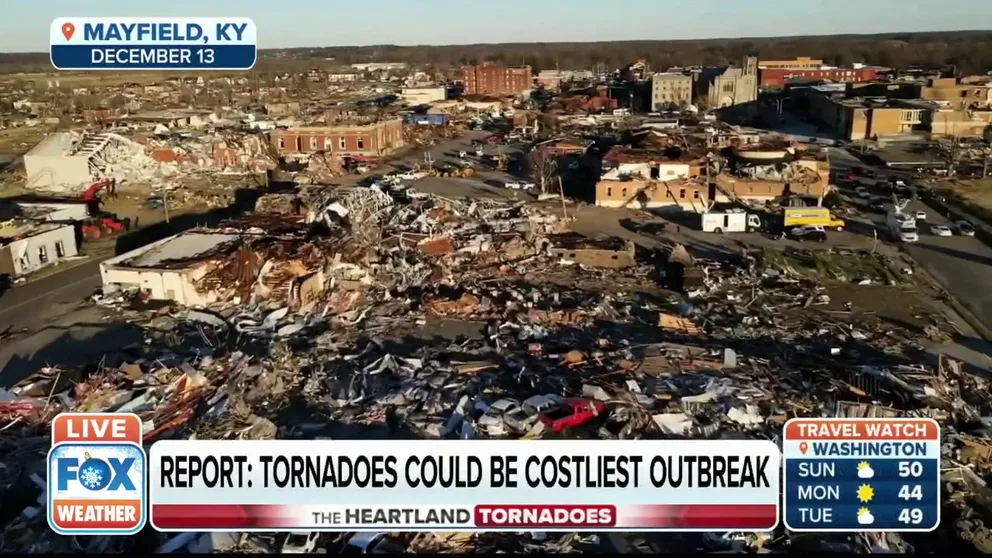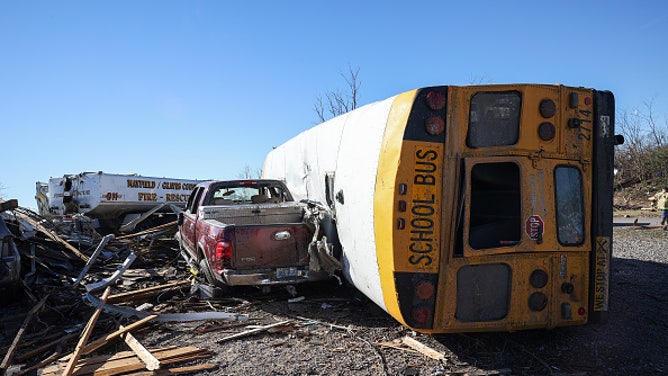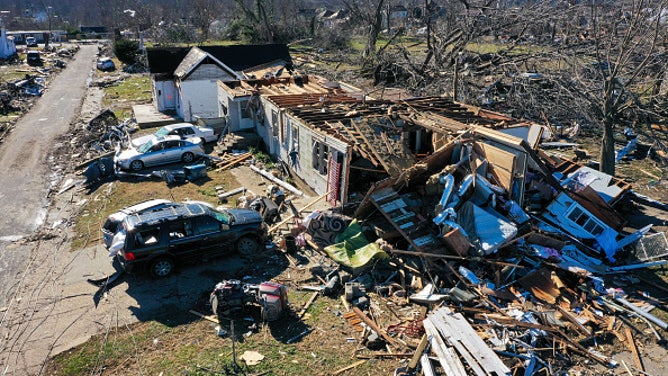Heartland outbreak could be costliest tornado event in US history, report says
A catastrophe modeling firm estimates the cost to be $3 billion.
Report: Dec. 10 tornado outbreak could be costliest in US history
Paul Walsh from BreezoMeter joins FOXWeather to talk about the recent report about how the Dec. 10 outbreak could be the costliest in U.S. history.
The Dec. 10 tornado outbreak could be the costliest in U.S. history as totals for insured losses are being estimated around $3 billion, according to a catastrophe modeling firm.
Karen Clark & Company said this week that their recent analysis estimated the several billion-dollar total from the destruction of more than 50 tornadoes.
Paul Walsh, General Manager for BreezoMeter, says that it takes a lot of work to get that estimate, and while that may be high, it could change.
"They basically work with insurance companies, and they use very sophisticated models to estimate what the insurance payout would be for various types of catastrophes like tornadoes, earthquakes, hurricanes, etc.," Walsh says. "It takes them a while, though, to actually get a specific number. So, the numbers that we're seeing now are very, very much preliminary estimates."
Walsh’s company provides actionable environmental data and insights. He says that comparing the December outbreak to ones of the past could put it at the top of the list for the costliest events.
"According to the Insurance Industry Institute, they think that this could be one of the most expensive in history. And it puts in perspective on that," he said. "The largest insurance payout for a tornado was in 2011, and that was about eight and a half-billion dollars."
And just like the Tuscaloosa, Alabama, outbreak, this month’s event will take time, as many things factor into the total.
"When the payouts start happening, so when the insurance money starts flowing, they'll start to calculate that. But it's so vast," Walsh says. "There's so many different types of structures that were damaged and businesses that were damaged. It's going to take much longer for those numbers to come in. I think we'll get a pretty good estimate, probably in another month or so, but that again will be a start of a preliminary estimate."
Walsh says that while the record-breaking event is terrible to see now, things will get better.
"Over the next year to two years, we'll see that that region [. . .] create an infrastructure that will be more resilient, so we’ll be better able to deal with the next event. That's what happened at Katrina. That's what happened with Sandy," Walsh says. "Basically, there's an economic rebound afterward, but you have to get through the worst part of it, which is where we are right now."











